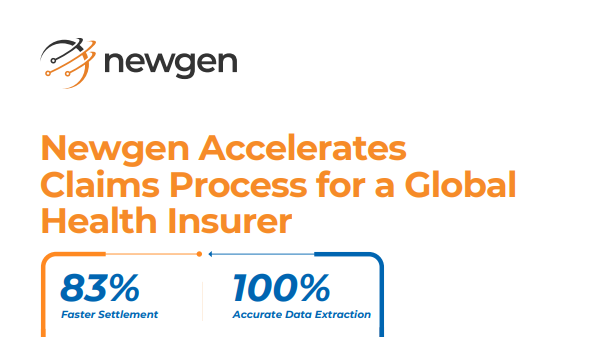Invisible Cost You’ve Learned to Live With
You know that moment when someone asks for a document, and you realize you’re hunting through email threads, shared drives, or maybe dozens of folders labelled “final_final_v2” only to find it’s still not the version you need? That frustration of version controlling hides a hidden cost.
It’s not just lost time, it’s risk. Delays in contract renewals. Missed compliance deadlines. Teams are duplicated because they can’t find what exists. Decisions made without all the facts. And at scale, across departments, that “just looking for a file” time sums up to real money leaking out of the business.
What used to be “document chaos” is now becoming untenable. With data volumes exploding, regulatory burdens rising, and remote or hybrid work being the norm, organizations can’t afford to make finding, managing, and securing documents a manual slog. That’s where automation paired with intelligent document platforms kicks in. It’s not hype; it’s how enterprises are finally turning document management from drag into driver.
How AI-first Document Management Platforms Work
To move from chaos to clarity, you need more than just storage and search. Here’s what modern, AI-first document intelligence platforms bring to the table and how they actually work under the hood.
Multi-channel Capture & Ingestion
Documents arrive in all forms: paper, PDFs, emails, scans, mobile photos, vendor uploads. An intelligent document management platform captures from all those touchpoints. OCR (optical character recognition) converts images of text into machine-readable form. Emails or PDF attachments are ingested with minimal manual overhead.
Classification & Metadata Extraction via AI/ML
Once captured, documents need to be understood. AI models classify them (invoice vs contract vs claim vs correspondence), extract key metadata (dates, parties, amounts, clauses), and even tag based on layout features. For example, forms with similar structure are grouped; unstructured letters are parsed for relevant fields. The system learns continuously, improving accuracy.
Workflow Automation & Low-code Tools
Classification is just the middleware. Next comes action. Documents flow through approval processes, contract reviews, vendor onboarding, exceptions routing, all automated. Low-code or visual tools let teams build these workflows without having to write complex code. For example, a vendor invoice comes in, is classified, matched, routed for approval, escalated if overdue, all without manual handoffs.
Records & Retention Management + Governance
For compliance-heavy industries, you need rules about how long to retain different classes of documents, how to archive, how to enforce access controls, and the how to maintain audit trails. Authenticity, version history, redaction, secure storage, and disposition policies are baked in. If regulators ask, you have logs, proof, and control.
Search, Retrieval & Disaster Recovery
Even with classification and workflows, retrieval must be intuitive. Full-text search, metadata filters, GenAI or prompt-based query sometimes, federated search across repositories, all help. On top, you need reliable backup, version control, and protection against disasters. Physical destruction, cyber-attacks, system failures, document repositories must endure.
The Forrester Wave™: Content Platforms, Q1 2025
Organizations looking for an advanced content platform capable of scaling for heavy workloads and that need deployment flexibility and advanced automation and AI capabilities should consider Newgen.
Workflow Transformation with Intelligent Document Management
Now, let’s zoom into what actually changes for teams when an organization adopts these capabilities. The difference isn’t subtle.
Contract Lifecycle Management
Contracts no longer sit in PDFs or shared drives until someone manually pulls them. A system auto-detects renewals, flags risky clauses, routes drafts through legal, versioning every edit, and triggers reminders. This means fewer missed renewals, better risk control, and faster deal cycles.
Finance—Invoices, Claims, and Payables
Invoices arriving through different channels get digitized. Duplicate detection, line-item extraction, matching with purchase orders, all become automated. Errors drop; approvals happen faster; cash flow forecasts improve because you have visibility. In claims or insurance, similar flows handle enrollment forms or grievances efficiently.
HR / Onboarding / Employee Services
Onboarding is document-heavy: tax forms, ID verification, offer letters, policies, compliance docs. Intelligent systems can assemble full onboarding bundles, auto-validate inputs, redact sensitive info, and store everything with versioning and metadata. HR teams spend less time chasing missing signatures and more time on actual employee experience.
Records & Compliance Teams
Regulated sectors (healthcare, government, energy, banking) have strict rules: how you store, who accesses, what you keep. Intelligent process automation ensures retention schedules are enforced; audit trails are maintained; records (both physical and digital) stay authentic. Disposition (deletion or archiving) follows policy. When regulation changes, you adjust rules centrally.
Collaborative Access & Content Services
Teams across geographies access content. Marketing wants old case studies; legal wants precedents; operations want specs. With an intelligent content services layer, all these documents are in a unified repo. Role-based access ensures secure permissions. Integration into business apps (CRM, ERP) means you see documents in context, not in isolation.
The ROI of AI-powered Document Management System
This is not just about slight efficiency gains. The leap is often exponential when you stack all benefits.
Time Saved = Money Saved
Every minute someone spends hunting for a document is lost opportunity. When documents are automatically classified, retrievable, versioned, and orchestrated that time drops dramatically. Faster contract turnaround improves revenue recognition. Quicker invoice approvals reduce late fees and optimize cash flow.
Reduced Risk, Increased Compliance
Errors in contracts, missing clauses, misfiled records, or failing retention policies are expensive. Fines, audits, loss of trust, and operational risks escalate. With AI-driven classification, access controls, audit logs, and record management, risk is no longer something you patch after the fact, it’s something built in.
Scalability & Agility
Manual document processes collapse under volume. But a platform that scales, handling thousands/millions of documents, many formats, many input channels, lets growth not be hindered. When new regulation appears, workflows adapt. When mergers happen, you incorporate documents from legacy systems without chaos.
Better Employee Experience
People hate being document hunters. They want tools that help them get their job done. When tedious work vanishes, morale improves. Time freed up means more creativity, better decisions. Leadership can shift focus from firefighting to strategy.
Competitive Differentiation
In industries where speed, compliance, and customer trust matter, this becomes a differentiator. Being able to guarantee secure, reliable, fast document-handling matters for clients, regulators, and partners.
What Leaders Should Do Now to Capture the Shift in DMS
If you’re reading this, you probably already sense the urgency. You don’t need to overhaul everything overnight, just make intentional moves.
- Map Your Pain Points First
Identify where document delays, errors, and compliance gaps hurt the most. Which workflows bleed time, contract renewals, claims processing, vendor onboarding? Start there. - Prioritize Automation in Critical Workflows
Pick one or two high-value use cases. Automate the capture, classification, workflow loop fully. Measure impact: cycle time saved, error reduction, risk reduction. - Choose a Platform That Embeds AI, Not One You’ll Add Later
Make sure the system you adopt has classification, extraction, low-code workflow, versioning, audit logs, secure records management etc., out of the box not as optional add-ons. Integration capability matters: with your ERP, CRM, identity management, storage systems. - Governance, Policies & Training
Automation doesn’t excuse sloppy policy. Define access rules, retention schedules, version control norms. Train teams so they trust and use the system. Trust is built when the system quietly does its job well. - Plan for Scaling & Evolution
Your needs will grow. Data volumes will rise. Formats will change. Regulations will tighten. Choose solutions that can evolve: modular architecture, cloud or hybrid flexibility, federated access across repositories, disaster recovery baked in.
Final Thought: Documents Aren’t Just Files, They’re Assets
Here’s the lens shift most leaders don’t make. Documents are not overhead. They’re strategic assets. The contracts, claims, policies, invoices, they contain value, risk exposure, institutional knowledge. When you treat them as afterthoughts, you bleed efficiency.
When you build a document intelligence foundation, capture, classification, workflows, records governance, retrieval, you stop patching leaks and start steering momentum. You build agility. You mitigate risk. You create trust in your operations.
Across enterprises today, document management is no longer just a backend utility, it’s a strategic backbone for agility, insight, and compliance. With NewgenONE AI-powered Document Management solution, organizations can centralize content, enforce version control and audit trails, automate approval workflows, apply rights-based access, and enable intelligent search (including prompt / GenAI query), all within a unified, scalable, secure platform. The result: content stops being a liability and becomes a catalyst for smarter operations and faster outcomes.
You might be interested in



16 Dec, 2025
Building Digital Trust in Citizen Services: The New Frontier of Digital Governance

